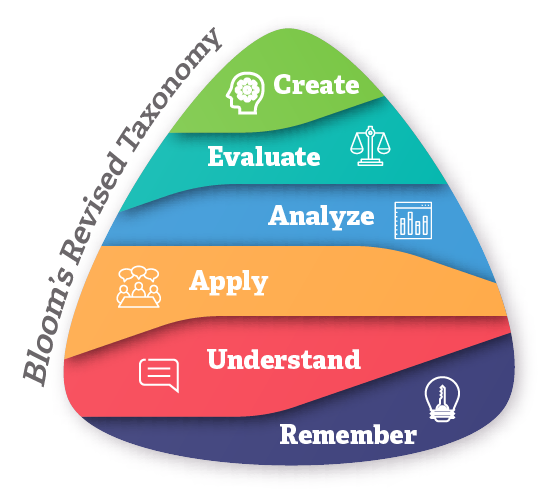Student learning outcomes assessment focuses on measuring the knowledge, skills, and abilities that students acquire as a result of their educational experiences. When writing learning outcomes, verbs are used to clarify the intended cognitive process and level of complexity of the learning objective or activity.
The verbs associated with each level of the taxonomy are carefully selected to reflect the type of cognitive activity that is expected of the learner. For example, at the lower levels of the taxonomy, such as "remembering" and "understanding," the verbs are often focused on recalling and comprehending information, such as "list," "define," and "explain."
As the levels progress to higher-order thinking skills, the verbs become more complex and require learners to engage in more critical and analytical thinking processes. For example, at the higher levels of the taxonomy, such as "evaluating" and "creating," the verbs require learners to make judgments, form opinions, and generate new ideas, such as "judge," "assess," and "design."
By using appropriate verbs, educators can design learning objectives and activities that align with the intended level of cognitive learning and promote the development of higher-order thinking skills. Additionally, the use of specific verbs provides a clear and consistent language for educators to communicate learning objectives and outcomes to students, colleagues, and stakeholders.

Here is short list of action verbs that align with Bloom's Taxonomy
explain, describe, summarize, classify, compare, discuss, interpret, distinguish, illustrate, infer, predict, translate
Focus on the behavior! Read: Why Understanding Isn't a Learning Goal
Download a more extensive list of Bloom's Revised Taxonomy verbs for writing learning outcomes.
It's worth noting that these are not exhaustive lists, and some verbs may be applicable to multiple levels depending on the context and intended learning outcomes. Additionally, the use of specific verbs may vary depending on the discipline or subject area. The key is to select verbs that accurately reflect the level of cognitive learning that is being targeted and to design learning objectives and activities that align with those verbs.
Writing Effective Outcomes
Return to Assessment Academy